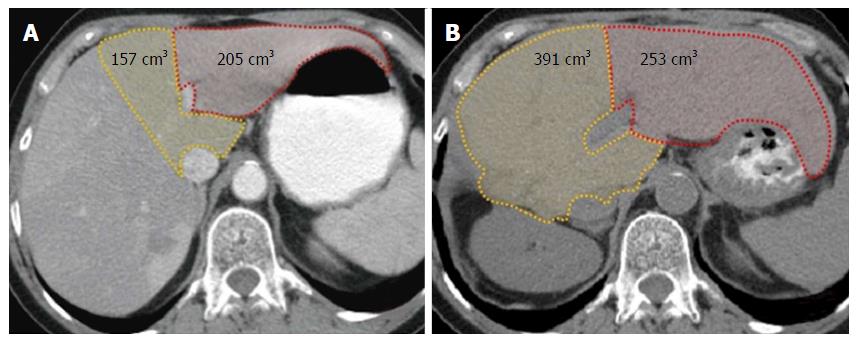Copyright
©The Author(s) 2017.
World J Gastroenterol. Jul 14, 2017; 23(26): 4815-4822
Published online Jul 14, 2017. doi: 10.3748/wjg.v23.i26.4815
Published online Jul 14, 2017. doi: 10.3748/wjg.v23.i26.4815
Figure 1 Schematic representation of two-stage hepatectomy with preservation of segment 4 only using outflow modulation.
A: During the first stage, a right hepatectomy with middle hepatic vein is performed along with an associated induction of congestion in the left lobe; B: Redistribution of portal flow (increased inflow to segment 4 after territorial congestion of segments 2/3) optimizes hypertrophy of segment 4 and avoids hypertrophy of segment 2 and 3; C: The second stage of procedure, a left lobectomy, is performed.
Figure 2 Computed tomography-based volumetry.
A: Before the first stage of liver resection; B: Before the second stage of the procedure. Modulated congestion of the left lobe associated with right hepatectomy led to a significant hypertrophy rate of segments 4 and 1 (156%) but only a modest hypertrophy rate of segments 2 and 3 (24%). Modified from Balzan et al[15].
- Citation: Balzan SMP, Gava VG, Magalhães MA, Dotto ML. Extreme liver resections with preservation of segment 4 only. World J Gastroenterol 2017; 23(26): 4815-4822
- URL: https://www.wjgnet.com/1007-9327/full/v23/i26/4815.htm
- DOI: https://dx.doi.org/10.3748/wjg.v23.i26.4815










